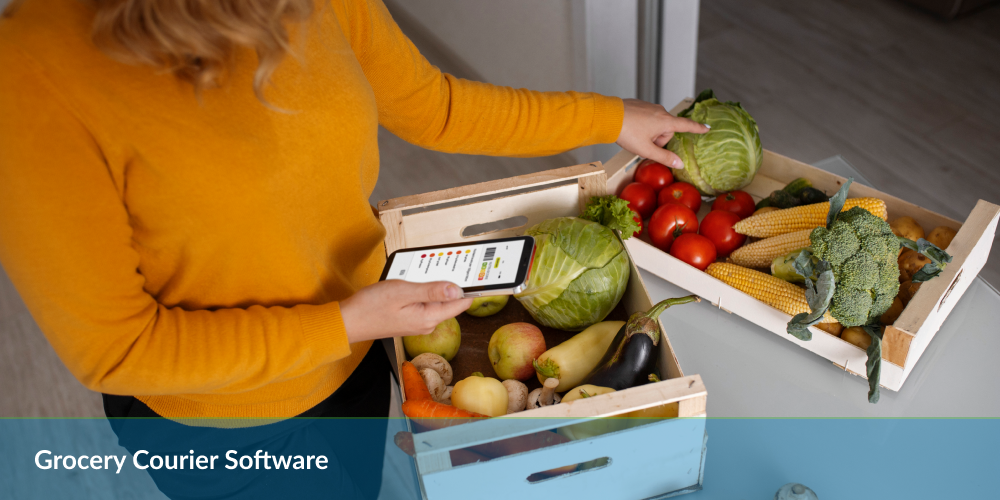Table of Contents
With the legalization of medical and recreational use of marijuana gaining popularity across many countries, this new acceptance has skyrocketed the global marijuana business, which is expected to cross the $90.4 billion mark by 2026.
North America alone is responsible for 80% of the market share out of the entire global market. So it’s a golden opportunity for distributors, dispensaries, and farmers to benefit from the burgeoning marijuana trade in the region.
Interestingly, more than price and product, customer experience has emerged as the key brand differentiator in the retail industry.
But how will it influence the cannabis industry?
Customer experience forms the crux of all interactions a customer has with your company. It includes perceptions, emotions, and feelings of the individual attached to the brand.
For the cannabis industry, CX is incredibly important. Here’s how:
- The stigma attached to first-time cannabis customers means it’s important to focus on making the buyer’s journey as seamless as possible.
- By better understanding your customers’ needs, you can easily direct them towards beneficial products and build credibility and trust.
- Creating an optimistic and inclusive environment will make your customers feel safe, try new products, and return for repurchase.
Now that we know why CX is a major component governing the success of your cannabis business, here are the top metrics you can use to drive CX and boost sales.
Best Metrics to Drive Customer Experience for your Cannabis Business
Order Accuracy
Before you ship your orders, make sure the packed order meets the customers’ requirements. Failing to do so will make you end up exposing your business to unnecessary disputes and grievances.
To measure order accuracy, divide the number of orders fulfilled accurately by the total number of orders and multiply by 100.
Order Accuracy = Orders completed accurately/Total orders X 100
An order accuracy close to 100% means you are delivering a satisfying purchase experience to your customers.
Average Transaction Time
One of the most important metrics for the success of your cannabis business is the average transaction time. Unfortunately, if you are using an inferior point-of-sales (POS) system or your staff cannot efficiently use the system, you may lose out on dozens of customers every week.
An effective POS system can reduce your transaction time, ensuring an excellent experience for your customers.
Delivery Time
It is the time taken for a product to reach a customer’s location once it has been dispatched from a warehouse. This metric specifically deals with the effectiveness of the supply chain network and the efficiency of the selected delivery routes.
You can calculate the average delivery time by dividing the total delivery time over a certain period i.e. week, month or year. Inconsistent average delivery times can help your managers to know which routes require optimization.
Delivery Turnaround Time
Delivery turnaround time is the total duration of time required to complete a particular order from the moment a customer places it on your website or app.
In other words, it is the time measured from the submission of a request by the customer to the final delivery of the product to the customer’s location.
This metric helps evaluate how efficiently your firm can process a request, locate the desired product, pack it for delivery, assign a delivery partner, and get it delivered to the customer’s final location.
Customer Effort Score (CES)
CES reflects the effort your customers need to put in to find a product, get a support request, or complete any other task with your company.
It’s a type of transactional metric that determines how easily your customers can find something. So, in a way, the more effortless this process is, the more likely you will retain your customers and drive conversions.
In fact, 94% of customers are more likely to repurchase if you offer a low-effort purchasing experience. Focusing on CES will help you understand whether you offer a seamless customer experience; and the friction points in the process.
By using this data, you can make your services better and increase customer satisfaction levels.
To accurately calculate CES, the best way forward is to use a post-interaction survey asking your customers to rate their experience from low to high. Then, based on this survey, you can calculate the average customer effort score.
Customer Satisfaction (CSAT)
CSAT is a highly targeted metric that depicts accurate information about the satisfaction levels of your customers.
Your customers can rate your delivery service or support in the form of a short survey.
Dividing the sum of scores with the total number of respondents will give you the CSAT score. The obtained score will help you create customer-centric services and increase customer retention by alleviating any friction points.
Read Also: Future of Cannabis Delivery Business.
Net Promoter Score (NPS)
The NPS metric depicts how many customers will recommend your business to a friend or family. The score is calculated from 1 to 10, with a score of 1 to 6 representing detractors, 7 to 8 as neutrals, and 9 to 10 as promoters.
NPS is not a clear indicator of product success but a reflection of how your customers perceive your business. Their level of satisfaction represents brand loyalty, retention, and high conversion.
To calculate the number of detractors from promoters, use this formula:
% Promoters – % Detractors = NPS
For instance, if 50% of your customers are promoters and 10% are detractors, your NPS will be 40%.
Customer Retention Rate
The customer retention rate represents how many of your current customers will stay with your business over a certain time. It also shows when your customers will likely stop using your services after a week, month, or quarter.
Customer retention rate allows you to track specific points in your product life cycle and projects the information about how users value your product over a certain period of time and how you can make any improvements.
To calculate customer retention rate, subtract the number of customers who churn over a period of time from your existing customers.
Total customers – Customers who churn = Loyal customers
Customer Churn Rate
Customer churn rate is a similar metric to customer retention rate. It depicts the total number of customers who leave your business over a certain period of time.
Using this metric, you can analyze your current marketing strategies, revamp your product design, and adopt a more customer-centric approach.
Remember, it’s more expensive to find new customers than to retain the existing ones. So, to accurately calculate the customer churn rate, use this formula:
Customer churn rate = (lost customers ÷ acquired customers) x 100
The NetworkON Advantage
Like any other retail business, companies in the cannabis industry need to look beyond pricing and product features to win more loyal customers.
Apart from the metrics discussed in the previous section, here’s how you can use NetworkON–a delivery and dispatch solution to help you make informed decisions based on real-time analytics:
- Using Heat Maps of ongoing tasks allows you to easily see where the customer orders are coming from to allocate resources to that specific area seamlessly.
- The platform gives you a notification when a new customer signs up for your services, allowing you to determine which marketing strategy works best for your business.
- You can analyze repeat customers and recurring orders on the analytics dashboard. You can segregate your loyal customers and offer them customized services.
To discuss additional benefits of the NetworkON platform and how you can use it to elevate your customer satisfaction levels, contact us at info@networkon.io or visit our website.
Frequently Asked Questions
Why is customer experience (CX) important for the cannabis industry?
Customer experience (CX) is crucial for the cannabis industry because it helps build trust, especially among first-time users who may have concerns or stigmas attached to cannabis use. By focusing on a seamless buyer’s journey, understanding customer needs, and creating an inclusive environment, cannabis businesses can ensure customer satisfaction, leading to repeat purchases and loyalty.
What metrics should I track to improve customer experience in my cannabis business?
To enhance customer experience in your cannabis business, you should monitor key metrics such as:
Order Accuracy: Ensures that customer orders are fulfilled correctly, reducing disputes.
Average Transaction Time: Measures the efficiency of your POS system and staff in processing transactions.
Delivery Time and Delivery Turnaround Time: Evaluate the speed and efficiency of your delivery process.
Customer Effort Score (CES): Assesses how easily customers can interact with your business.
Customer Satisfaction (CSAT) and Net Promoter Score (NPS): Gauge overall customer satisfaction and loyalty.
Customer Retention and Churn Rates: Track how well you retain customers and reduce churn.
How can NetworkON help improve customer satisfaction in the cannabis industry?
NetworkON offers a range of tools to enhance customer satisfaction, including:
Heat Maps: Identify where customer orders are concentrated to optimize resource allocation.
Customer Sign-up Notifications: Track the effectiveness of marketing strategies by monitoring new sign-ups.
Analytics Dashboard: Analyze repeat customers and recurring orders to offer personalized services. These features allow cannabis businesses to make data-driven decisions that improve service quality and customer satisfaction.
How do I calculate the Customer Churn Rate for my cannabis business?
The Customer Churn Rate is calculated by dividing the number of customers who left your business over a certain period by the total number of acquired customers, then multiplying by 100. This metric helps you understand how many customers you are losing and provides insights into how you can improve customer retention strategies.





Dahlia Collins
Really great article, this is very helpful for a lot of restaurants owner out there. I hope they can get a chance to read this blog. I also suggest to have the best order management tool to make the restaurant's ordering and delivery systems faster, accurate and more efficient.